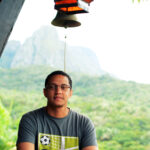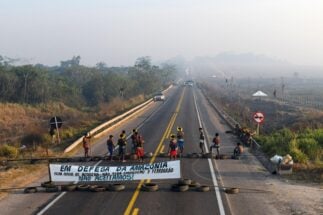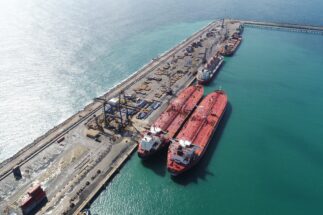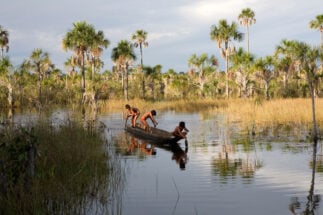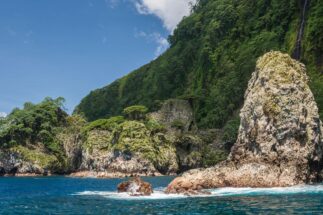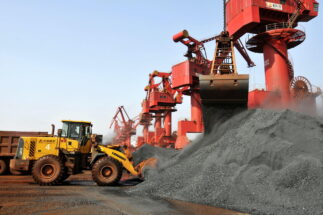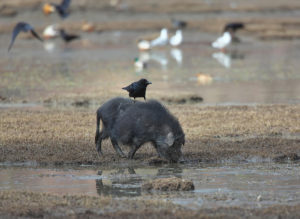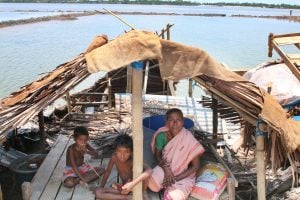After standing numbly before the house where he and his family lived for 20 years, farmer João Ferreira steps onto a patch of land recently turned up by diggers and pressed by a steamroller.
Before the machines arrived, he grew string beans, cabbage, andu beans, cocoa and bananas, among other crops, which fed a household of four people and, when sold, guaranteed him a monthly income of around 1,600 reais (US$280). All that remains now is the rubble of the house, surrounded by dry ground.
“I was happy in my simple life, I had everything I needed. My land, water, my house all tiled. Now look how I am living,” says Ferreira, who now lives in an 18-square metre cabin made of boards, with no water installation. The bath? “In a bowl, for clothes and everything.” And to go to the toilet? “Out there, through the bush.”
Ever since he was born, the farmer, aged 47, has lived in the village of Itariri, a rural area outside the city of Ilhéus in Brazil’s state of Bahia. But in 2020, construction work began in the area on a port and its service complex, together called the Porto Sul – a project that has, quite literally, arrived on people’s doorsteps.
Presented by the government of Bahia in 2007, the complex, which is being built within the environmental protection area (APA, in Portuguese) of Lagoa Encantada and Rio Almada, has been the subject of an enduring debate between investors, public bodies, environmentalists and long-established local communities.
The mine in Caetité, the port in Ilheus and the stretch of railway that connects them belong to the same company, Bahia Mineração (Bamin), whose controlling stake is held by the Kazakh company Eurasian Resources Group (ERG). The group has businesses in Russia, China and African nations, and is the subject of an ongoing, eight-year investigation by the UK’s Serious Fraud Office for suspected corruption.
The construction of the port alone, according to Bamin, will require an investment of 4 billion reais (US$697 million), to be made entirely by the company, which was also responsible for the construction of the wooden cabin where João Ferreira currently lives. “After much insistence,” in his words.
Paving over springs
Porto Sul will consist of an on-land storage area and a maritime section located 3.5 kilometres from the coast, though the complex is only in the early stages of construction, as signs currently hanging outside the site indicate. The natural and human impacts, however, are already beginning to emerge.
42 million tonnes
The annual capacity of ore and grains expected to be handled for export from Porto Sul, which is scheduled to open in 2026
In Itariri, 17 hectares of the Atlantic Forest are being cut down to make way for a road that will connect the railway to the port. As a result of this deforestation, which was authorised by the Institute for the Environment and Water Resources of Bahia (INEMA), a number of water springs have been exposed.
Diálogo Chino visited the region in October and found at least ten springs surrounded by tarpaulins, installed by Bamin in an attempt to prevent the imminent death of the water sources. According to the latest Brazilian census – from 2010, and therefore already outdated – more than 3,000 people live in the areas around the road project, and depend on these waters for drinking and farming.
In the settlement of Bom Gosto alone, 80 families live off agricultural production, according to a survey by the Pastoral Land Commission (CPT). After having his three-hectare plot expropriated for construction work by the government of Bahia, João Ferreira found shelter in the settlement.
They are killing the streams that supply us
“A project can change, but a spring does not change place. They have to change the route of this road,” he says.
Requesting anonymity because she fears reprisals, a woman born in the region says that the road was opened in the most important stretch of the springs.
“They ran over the best water in the region,” says the woman, a farmer who had her field cut in half by the access road to the port. Before that, she says, she drew clear water from a well in her own backyard. At the site, we found muddy water and a foul smell, the result of the decomposition of the vegetation cut down around the spring. 
“Without water, thousands of people here in Itariri will have their livelihoods jeopardised. And there’s more: there will be no food at the market, [so] it’s bad for the whole town,” he adds.
In a response by email, Bamin stated that it is acting “in compliance” with the licenses issued by public agencies. It added that the water sources were mapped and that, when necessary, it has modified the road layout. The company also states that the dirt in the springs after the deforestation is superficial and temporary.
Although it is responsible for the management and supervision of the APA where the port is being built, the state environment institute, INEMA, responded by email that questions about the construction should be made to the Brazilian Institute of the Environment and Renewable Natural Resources (IBAMA), the federal-level agency responsible for its licensing. 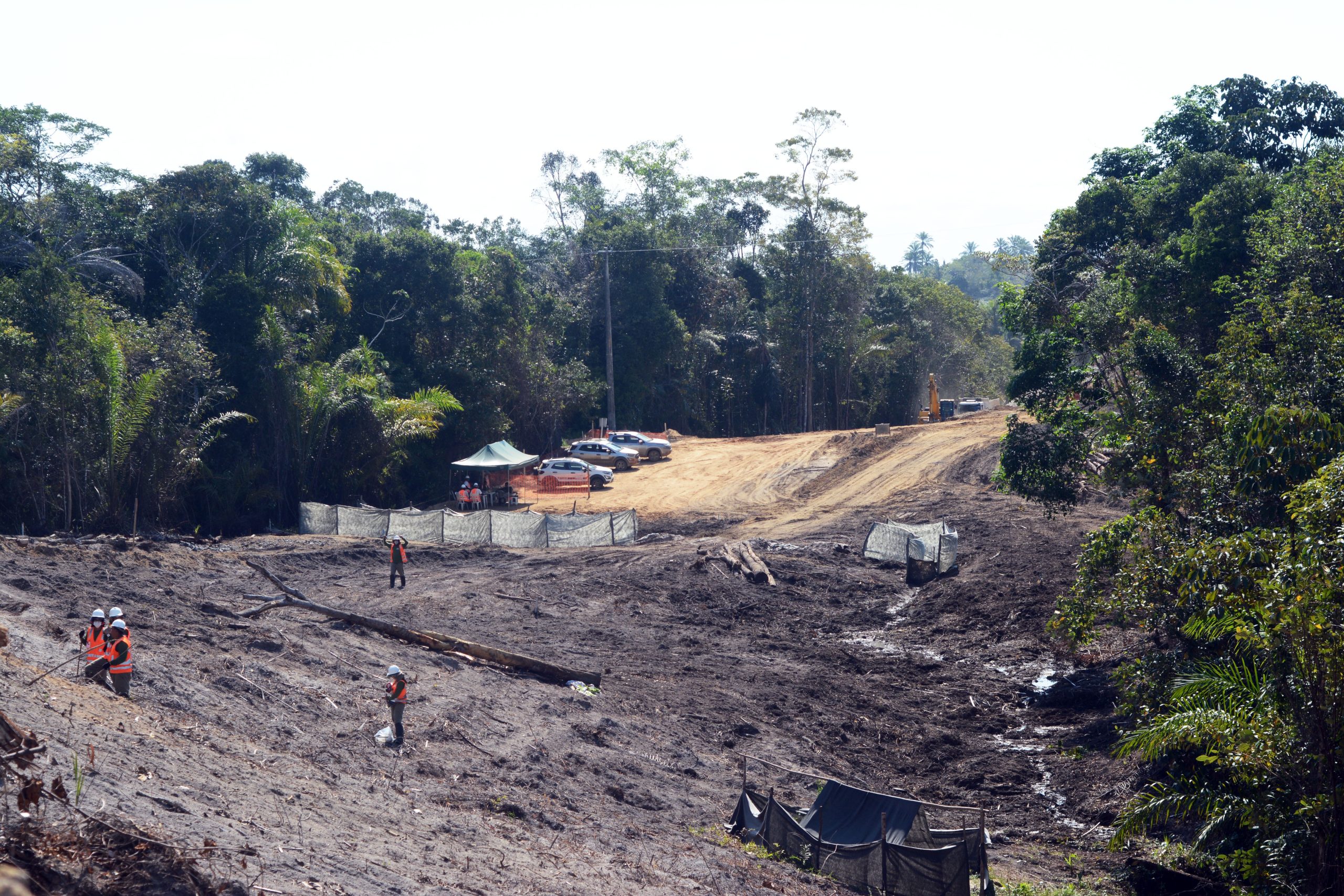
On 15 January 2021, INEMA published Administrative Rule 22.102, authorising the deforestation of the 17 hectares within the APA and granting the installation licence for the enterprise.
The agency’s action is also made explicit in the socio-environmental commitment terms, signed by Bamin and public agencies – among them INEMA – which aimed to prevent and mitigate damages from the construction work.
Megaport will impact small-scale fishing
The construction of the port is already affecting those who live off the land, but it is equally impacting those who make their living on the water.
The Almada river is the main source of income for more than ten riverside communities, whose families live off fishing for shrimp and fish such as bass, and collecting blue land crab, or guaiamu, as they are known here. Along the rivers’ banks, but not too far from the coast, the community of Vila Juerana has great tourist appeal, not only for offering freshwater swimming, but also for its bars that serve up the “fruits of the Almada”.
But such livelihoods are facing threats from construction for the megaport. Once it has travelled along the railroad, iron ore will be stored at Porto Sul, in facilities that will occupy 1,500 hectares in the river basin area.
An expert in this estuary, artisanal fisherman José Mendes de Jesus, 70, says that there “used to be a line of boats” operating on the river, until the construction work on the port began in August 2020. “All you had to do was cast a line and the sea bass would come, all big ones. Today, if you catch one kilo, even that’s a lot,” he adds. 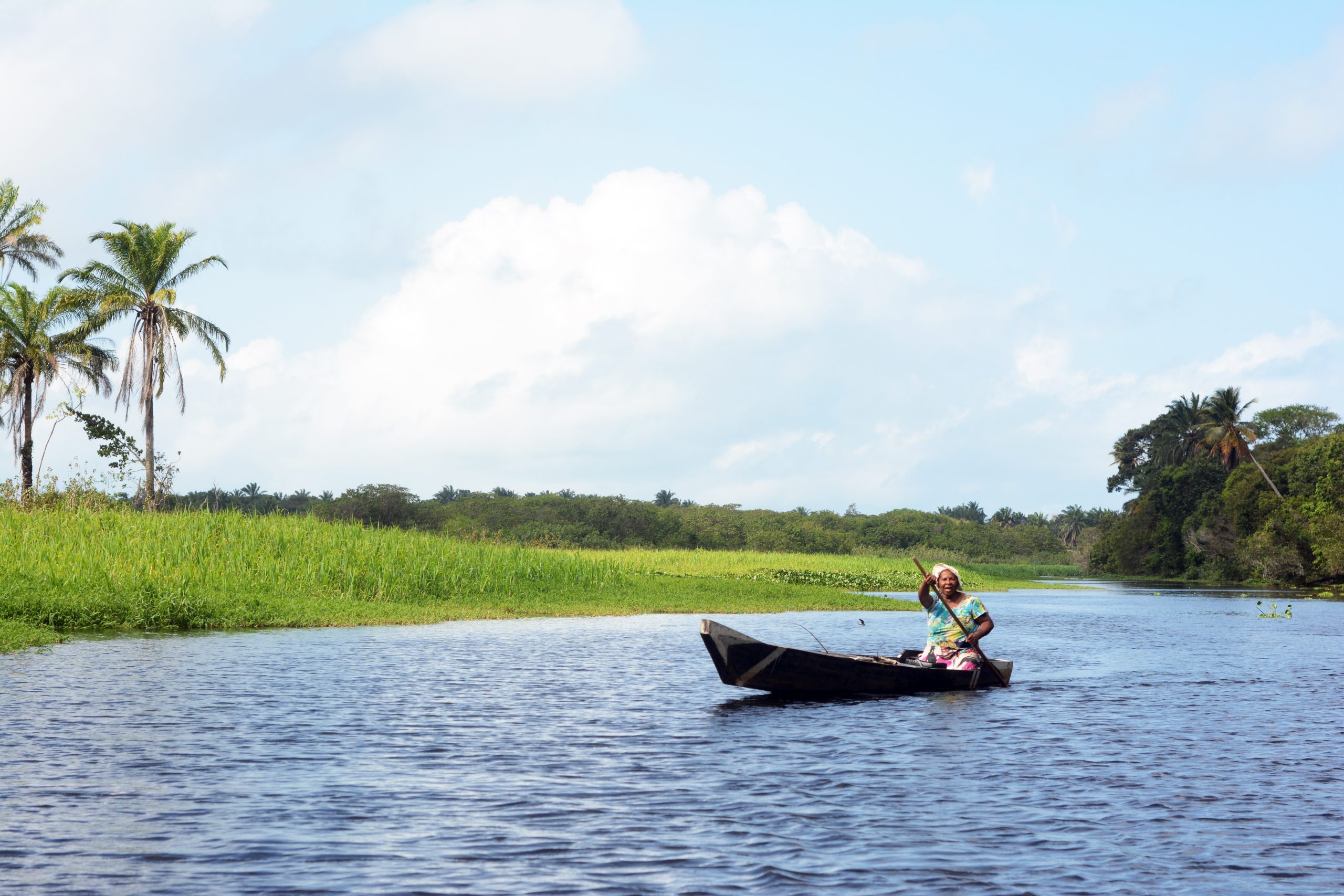
“We saw explosions in the water, pile-driving at the bottom of the river. There is no fishing ground that could stand it,” recalls Mendes de Jesus. “There were lots of fish where that bridge is. There used to be lots of fish. Now there’s nothing left. It makes me want to cry.”
Besides pointing out the losses already felt by those who live off fishing, teacher Mônica Santos, who is on the board of directors of the Vila Juerana residents’ association, fears future problems for the community: “What will happen when this ore comes into contact with the water? And what about people’s breathing, with this iron dust?”
“Tourists come here to dive and eat what comes out of the river,” Santos points out. “Who will want to bathe in ore and eat fish with ore?” 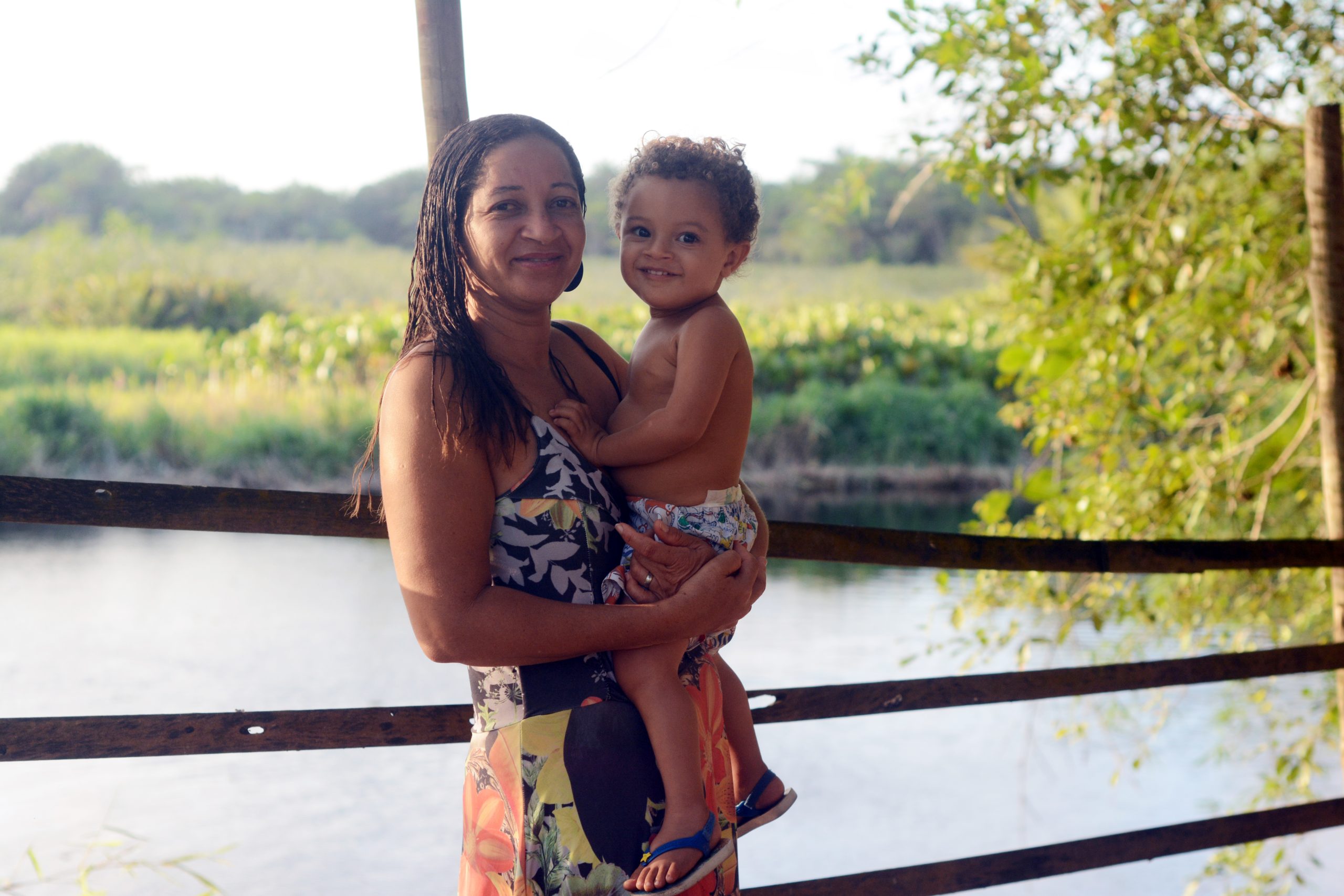
Inadequate compensation
The fishers of Vila Juerana are, like many Brazilian fishers, organised into a fishing “colony”, with theirs known as Colony Z-34, and based in Ilhéus. The president of Z-34, Reinaldo dos Santos, known as Zé Neguinho, is also apprehensive about Porto Sul – especially the maritime portion of the complex, where the large cargo ships will dock, which will be located in the main fishing area of the region, the Duro de Aritaguá that serves Ilhéus and four other cities.
Science explains the area’s ability to supply these cities amply: at the mouth of the Almada River there is a geological fault, the Almada Canyon, which functions as an enormous underwater deposit of organic material, and therefore shelters micro-organisms, as well as small shrimps – called sarica by local fishers – and even larger fish of commercial interest.
“Nobody is against development,” Zé Neguinho says, “but how will fishermen survive if they are killing our fishing grounds?”
Imagine the sadness of seeing this ore destroy everything
Z-34 alone has 2,700 associates, a contingent that is already larger than the 1,500 direct jobs that Bamin expects to generate at the beginning of the port terminal’s operation, according to the company.
In the other colony in Ilhéus, the Z-19, there are more 870 fishers. There are also five fishers and shellfish gatherers’ associations that operate independently from the colonies, adding up to well over 2,000 fishing professionals.
“It’s all connected. The Lagoa Encantada supplies the Almada River. The Almada River flows into the sea, into the Duro de Aritaguá. Imagine the sadness of seeing this ore destroying everything,” adds Zé Neguinho.
The Lagoa Encantada is a lagoon of about 20 square kilometres, surrounded by waterfalls and canals that also function as marine nurseries. It welcomes tourists all year round. 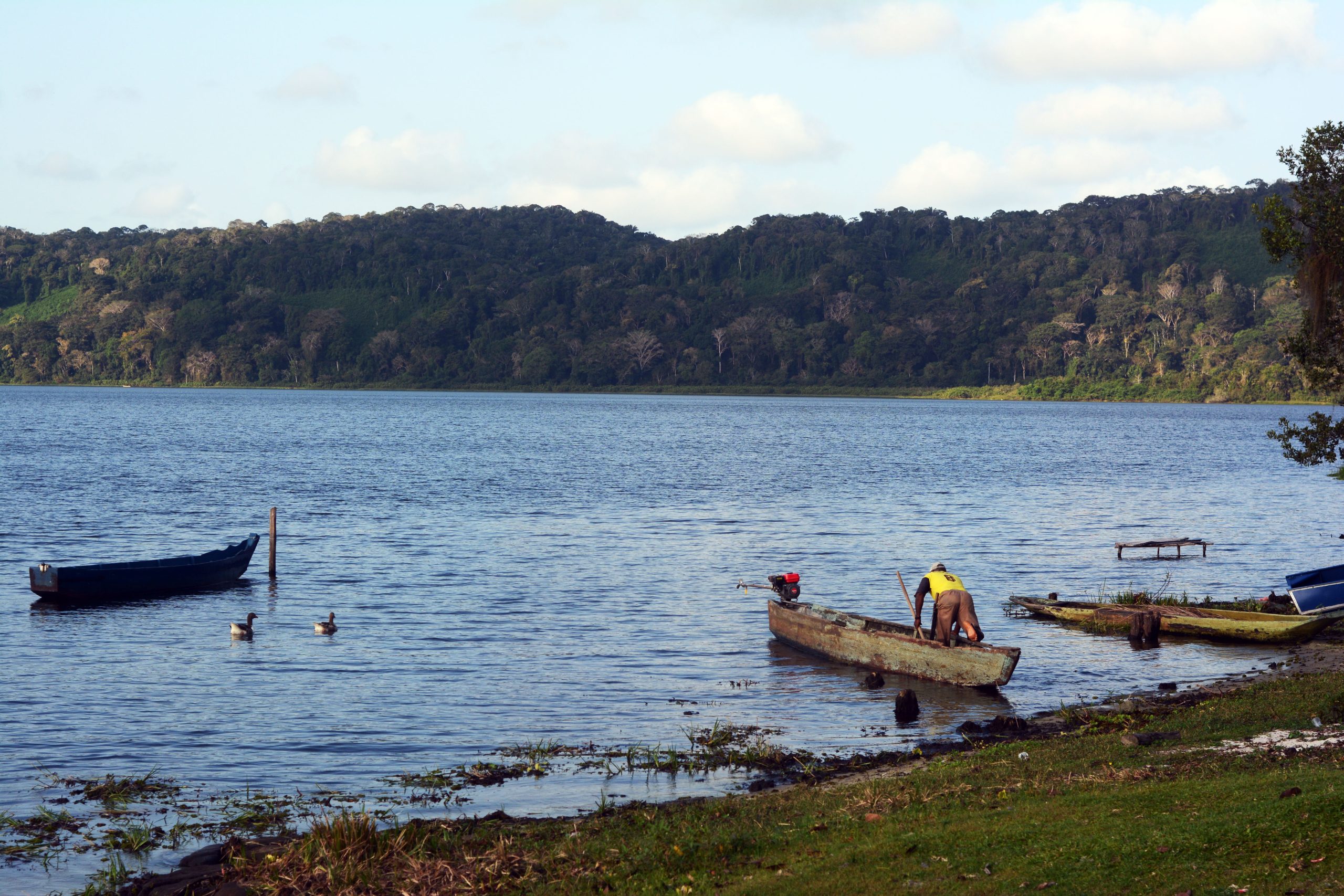
The company also stated that it maintains a permanent dialogue with fishers and that a fishing activity compensation programme is already underway. The company did not, however, inform us what this programme consists of.
The fishers say that communication with the company is difficult. Together, the colonies and associations have drawn up a list of compensatory demands, which includes fleet renewal, purchase of equipment for the boats and their headquarters, and qualification courses for artisanal fishers, such as in ocean fishing. 
In the Z-34 colony, if the amount offered was divided equally among the members, each one would receive 4.74 reais (US$0.83) as compensation for the impact of the Porto Sul on their professional activity.
Chinese firms leave megaproject
In 2017, a consortium made up of the China Communications Construction Company (CCCC) and China Railway Group Limited (CREC) signed a memorandum of understanding with the state government and ERG to engage in the project linking the port, railway and mining operation. The Chinese companies, however, have decided not to take the deal any further.
Diálogo Chino contacted executives from the two Chinese companies to comment on the reasons behind the withdrawal from the deal, but received no response.
The work thus remains exclusively under Bamin, which faces criticism for the port’s impacts on the coast, and the mine’s operations in the sertão backcountry of Caetité. Residents in the area have reported houses damaged by explosions, environmental damage, and contractors’ failure to comply with agreements with the community.
The sole bidder
In addition to Porto Sul, Bamin won the tender for a the first section of the West-East Integration Railroad (Fiol), with the minimum bid of 32.7 million reais (US$5.7 million). The company will own the line for 35 years.
This area is also the starting point of the first section of the Fiol railroad, which will extend 537 kilometres to the port. In April, Bamin was the only company interested in the concession of this stretch, at an auction held by the federal government. With the minimum bid of 32.7 million reais (US$5.7 million), it bought the railroad for 35 years.
According to the original project plans, Fiol will run for a total of 1,527 kilometres between Ilhéus and Figueirópolis, in the state of Tocantins.
There is still no forecast for the concession auction for the second section of railway, which will stretch between Caetité and Barreiras, in western Bahia, but regional agribusiness is following the issue closely. During a live event held in May this year, the president of the Association of Farmers and Irrigators of Bahia (AIBA), Odacil Ranzi, said that the entity is pleading for an adjustment to the railway project, so that the storage facilities planned for western Bahia are located closer to soybean, corn and cotton farms.
AIBA was contacted, but did not reply. The Bahia state government, IBAMA and the Ilhéus city council were also all contacted for questioning, but did not reply.

